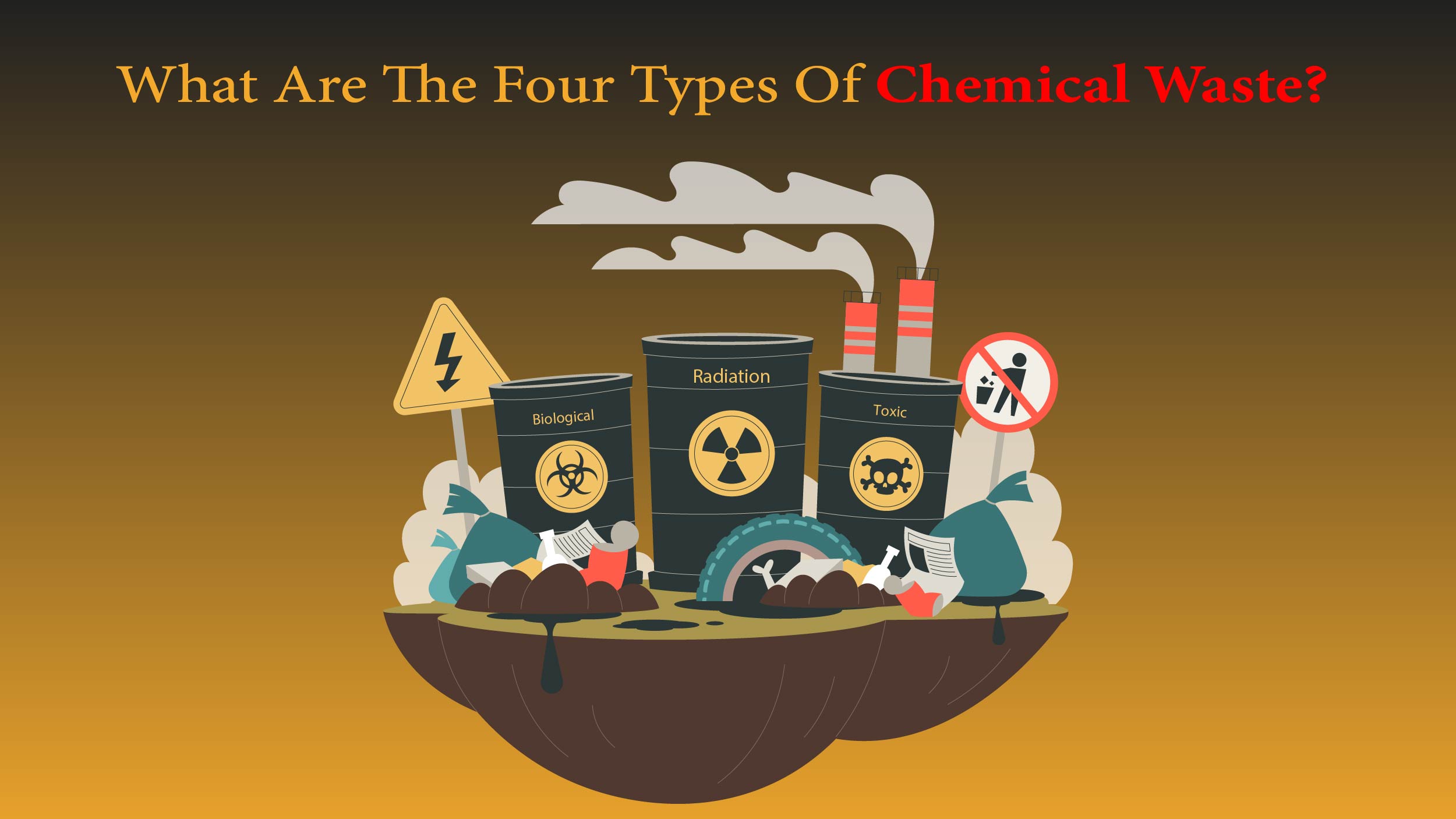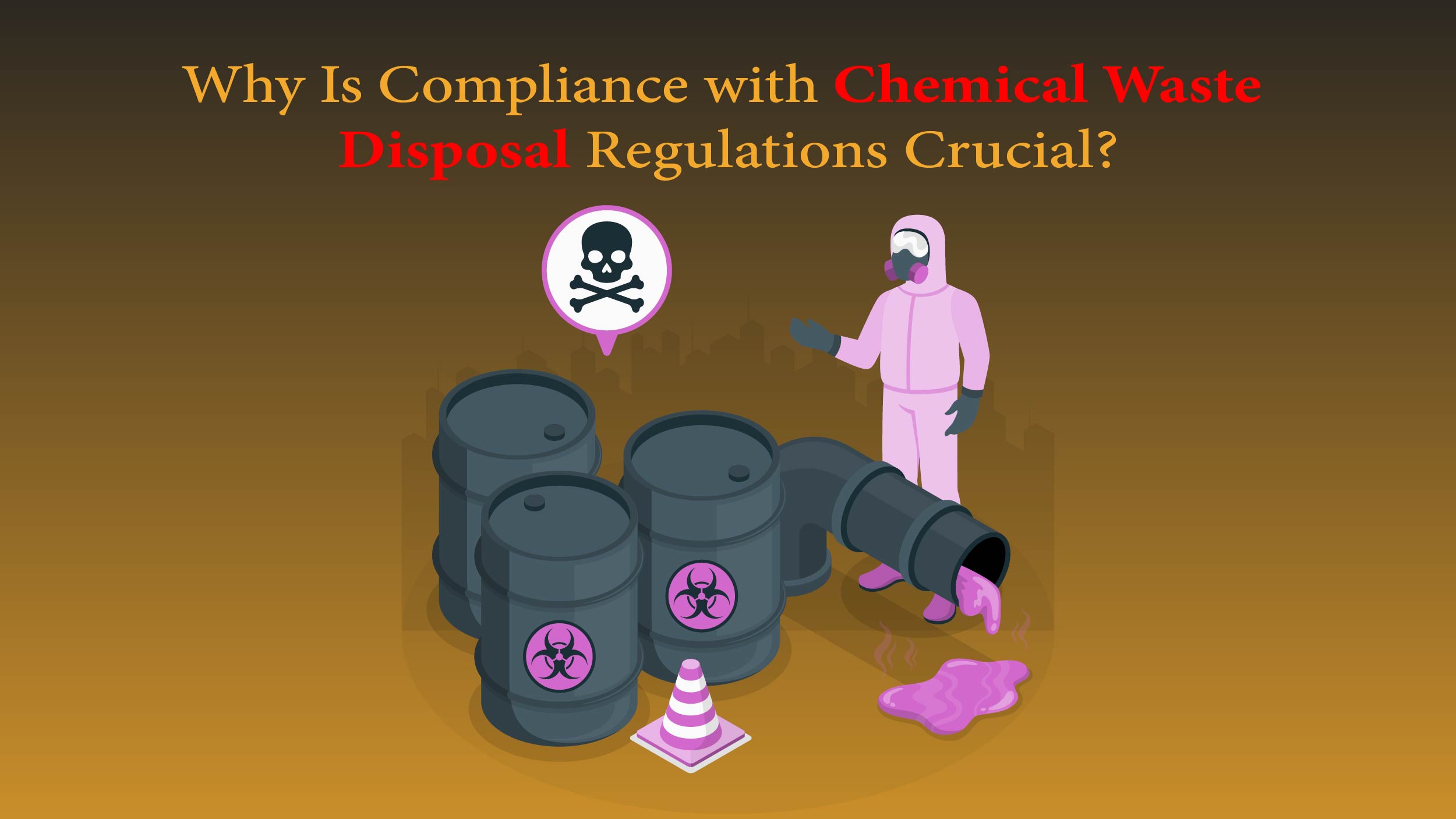Chemical waste disposal safely manages hazardous chemicals to protect humans and the environment.
Humans produce 400 million tons of hazardous waste every year- this is equivalent to 13 tons per second. At this rate, the only abundance will be in waste, not living beings—tons and tons of it.
This is why proper chemical waste disposal is crucial. All these technological advancements and we are yet to find ways to tackle our waste disposal issue (this is still an issue in remote areas).
In this article, you’ll learn what chemical wastes are, why proper disposal is crucial for a healthy environment, and five best practices for disposing of them. Read on!
What is Chemical Waste?
Chemical waste refers to any liquid, solid, or gaseous material that contains hazardous substances and poses a risk to human health or the environment. It can be generated from various sources, including industrial processes, laboratories, healthcare facilities, and households.
The characteristics that define chemical waste as hazardous include:
- Ignitability: Chemicals that are flammable or have a low flash point.
- Corrosivity: Chemicals that are highly acidic or alkaline and can cause damage to materials or living tissues.
- Reactivity: Chemicals that are unstable, explosive, or react violently with other substances.
- Toxicity: Chemicals that can cause harm to human health or the environment.
What Are The Four Types Of Chemical Waste?

Here are four common types of chemical waste:
- Ignitable Waste: This type of waste includes chemicals that are flammable or have a low flash point. These substances can easily catch fire and pose a risk if not handled properly.
- Corrosive Waste: Corrosive waste refers to chemicals that are highly acidic or alkaline and can cause damage to materials or living tissues. These substances can corrode metals, burn skin, and cause other harmful effects.
- Reactive Waste: Reactive waste includes chemicals that are unstable, explosive, or react violently when exposed to other substances. These substances can pose a significant risk if mishandled or improperly stored.
- Toxic Waste: Toxic waste consists of chemicals that can cause harm to human health or the environment. These substances may have acute or chronic toxic effects and can be harmful if ingested, inhaled, or come into contact with the skin.
Also Read: Carbon Management: Importance, Examples, and Key Strategies
How is Chemical Waste Disposed?
Below listed are some common ways of chemical waste disposal.
- Hazardous Waste Program: Most chemical wastes are disposed of through a hazardous waste program regulated by agencies like the Environmental Protection Agency (EPA). Wastes are stored in appropriate containers and collected for proper disposal.
- Land Disposal: This method disposes of hazardous waste in specially designed landfills that comply with regulations to protect groundwater and surface water resources.
- Incineration: Chemical waste is burned at high temperatures, destroying hazardous substances and reducing waste volume. This requires specialized facilities with pollution control measures to minimize harmful emissions.
- Recycling: Some chemical wastes can be recycled or reused by recovering valuable components. Recycling reduces the need for raw materials and minimizes the environmental impact of chemical waste.
Is Chemical Waste Disposal Necessary?
Chemical waste disposal is essential to protect the environment and human health. Improper disposal can pollute soil, water, and air, causing severe ecological damage and health issues.
Exposure to harmful chemicals can lead to chronic illnesses, respiratory problems, and systemic damage. Proper disposal ensures compliance with legal standards and demonstrates corporate social responsibility.
By managing chemical waste correctly, businesses can reduce contamination, safeguard public health, and ensure the well-being of future generations. Proper disposal procedures protect communities near industrial sites from toxic exposure and related health risks.
Why Is Compliance with Chemical Waste Disposal Regulations Crucial?

Compliance with regulatory frameworks is essential for the proper disposal of chemical waste, ensuring the protection of the environment, public health, and worker safety. Key components include:
- Basel Convention: This global agreement aims to reduce hazardous waste production and transportation. It establishes guidelines for environmentally sound management and disposal of hazardous waste.
- Stockholm Convention: This treaty focuses on persistent organic pollutants (POPs), which pose significant risks to health and the environment. It regulates the production, use, and release of POPs.
- Resource Conservation and Recovery Act (RCRA): This U.S. federal law controls hazardous waste from its creation to disposal, ensuring proper handling, transportation, and treatment.
- European Waste Catalogue (EWC): This system classifies waste, including chemical waste, in the EU, enabling accurate identification and disposal based on waste characteristics and content.
Other common global guidelines for chemical waste management include:
- Permits and Licenses: Businesses handling chemical waste must obtain permits from authorities, ensuring waste management strategies meet regulatory standards and allowing for regular inspections.
- Reporting Requirements: Regulatory compliance often involves detailed record-keeping, waste flow monitoring, and submission of waste manifests, ensuring accountability and transparency in waste management.
- Best Practices and Waste Minimization: Regulations encourage businesses to adopt best practices, such as pollution control plans, recycling, reusing, and substituting hazardous materials with safer alternatives.
- Enforcement: Regulatory authorities conduct inspections, audits, and impose penalties for non-compliance, ranging from fines to criminal prosecution, depending on the severity of the violation.
5 Best Practices for Proper Chemical Waste Disposal
Here are five comprehensive best practices to adhere to for proper chemical waste disposal:
- Adhere to Local Regulations: Regulatory bodies like the Environmental Protection Agency (EPA) set stringent guidelines for chemical waste disposal, varying by region. Take the time to understand and comply with these regulations to ensure responsible disposal practices.
- Storage and Labeling: Utilize suitable containers for chemical waste, ensuring compatibility and secure containment. Employ secondary containers for added safety, such as lab trays or dishpans. Label all containers accurately, detailing contents and associated hazards for clear identification.
- Maintain Accurate Inventory: Document the contents of hazardous waste containers meticulously to prevent unnecessary costs and facilitate effective tracking. This systematic approach aids in waste management and streamlines compliance with regulatory standards.
- Explore Recycling and Reuse: Embrace recycling and reuse options whenever feasible to diminish the demand for raw materials, conserve resources, and lessen environmental impact. Identify opportunities for safe recycling or reuse of chemical waste to maximize sustainability efforts.
- Employ Proper Disposal Methods: Employ approved disposal methods for chemical waste, such as participation in hazardous waste programs or utilizing specialized disposal facilities. Options may encompass treatment, incineration, landfill disposal, or other endorsed processes. Adhere strictly to guidelines outlined by hazardous waste programs or local authorities to ensure proper and responsible disposal.
Key Takeaways
Chemical waste disposal is a crucial component of a healthy ecosystem. Proper disposal of hazardous wastes ensures that all living beings and the environment are protected and harmonious. By responsibly managing chemical waste, we can minimize the potential risks and ensure a safer and cleaner environment for ourselves and future generations.




